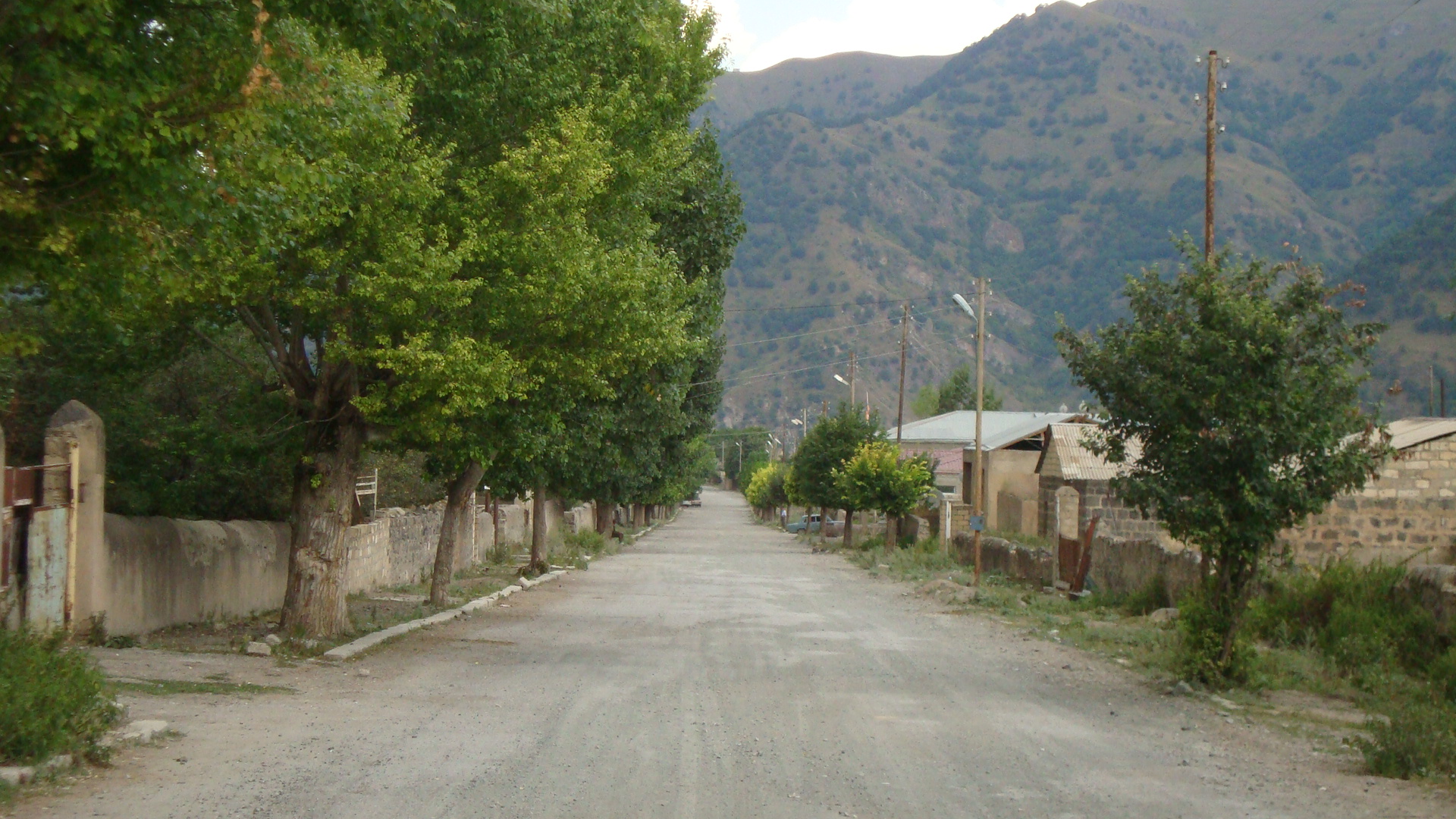The historic village of Tzar in the Karvajar region of Artsakh demonstrates the resilience of Armenian monuments in the region, despite intense efforts of erasure. The village, all but in ruins now, was once surrounded by a wealth of Armenian monuments in the medieval period, including several churches and the residence of local princes. Medieval historians first recorded the village in 1289, during the era of Mongol suzerainty over Artsakh and Greater Armenia. Despite hostile occupation, Tzar continued to flourish and grow, enough to be called “Great Tzar” by the 18th century. The village entered a period of decline in the 19th century and was eventually decimated by Soviet occupation in the 1940s-50s. Yet, despite these attacks and attempted eradication, the Armenian monuments of Tzar remain as testaments to the endurance of Armenian cultural heritage.
Medieval Monuments
The village of Tzar perhaps borrowed its name from the nearby fortress of Tzar, home to the region’s princely families. The castle, occupied since antiquity, was strategically located on a mountainous peninsula where the Trtu River meets the Tzaraget. The surrounding landscape is marked by deep gorges and steep slopes–a formidable setting for a medieval fortress. Just past the castle, the peninsula ends in a dramatic 300-meter drop to the rivers below. Thus, only the narrow connecting strip of land between the castle and the mainland required fortification. When tested, the castle was essentially impermeable, and medieval writers to refer to it as a “God-blessed stronghold.” Little remains of this fortress today, though the village and region at large retain its namesake, recalling Tzar’s historic importance.
Two of the best-known medieval monuments around the village of Tzar are the twin churches, Surb Sarkis and Surb Grigor (Saint Sergius and Saint Gregory). True to their “twin” status, the two churches are remarkably similar. Both were constructed in 1274, and are nearly identical in their appearance. They are single-nave basilicas, simple rectangular structures with a semi-circular apse in the eastern interior to house the altar. Both churches include small niches on either side of the apes, as well as a single narrow window in the eastern wall. Their construction techniques are equally similar: both are built of rough stone masonry but faced with finely carved and polished stones for a refined exterior. These churches were well-documented until the mid-20th century, when the Soviet occupation of the region endangered their survival. Unfortunately, the twin churches have not met equal fates: S. Grigor remains intact, but S. Sarkis is fully in ruins.
Recycled Ruins
While many of the medieval monuments in and around Tzar are lost to history, others were preserved through their reuse. In the 1940s-50s, Soviet forces built a school in the village of Tzar. In the course of construction, local architecture and sculpture was destroyed, perhaps including the church of S. Sarkis. However, pieces of these medieval ruins were used as building materials and are thus still visible in the walls of the school. The most obviously reused stones are khachkars, or cross-stones. The khachkars feature large, ornate crosses, often flanked by densely carved patterns of geometric or vegetal motifs. Apart from crosses, khachkars also include other Christological imagery, such as the six-pointed Star of David, grape vines signaling the blood of Christ, or doves in reference to the Holy Spirit. Some at Tzar even feature angels and ecclesiastic figures carrying Bibles or small liturgical objects. These elaborately carved crosses, over 130 in total, readily stand out against the blank stones of Soviet construction. While their use as spolia, or stolen building material, was likely intended to desecrate the khachkars, their prominent display on the walls of the school lend the building a surprisingly religious tone. This is particularly surprising for a Soviet school, which emphasized secular society.
The removal of these khachkars from their original sites should be condemned, and its impact on cultural heritage is devastating. As of 2020, UNESCO declared khachkars part of “the intangible cultural heritage of humanity.” Khachkars are not merely sculptures, but function as funerary monuments or gravestones. They can also be used to record historic events and bear inscriptions with important dates and details of local rulers’ names and families. In their removal from their original location, and the fragmentation that often occurs in the process, these stone records lose much of their historical value. Yet, the reuse of the khachkars in the school has perhaps had the opposite effect of its intent. Instead of erasing the cultural heritage of Tzar, the Soviet school almost acts as a museum to the rich sculptural tradition of the region. The prevalence of crosses and Armenian-language inscriptions attest to the longstanding Christian Armenian heritage of Tzar and its resilience, even in the face of attempted destruction.
